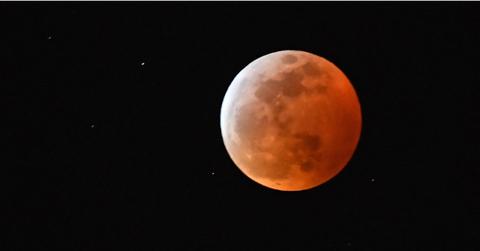Moonstruck Mystery: Scientists Uncover 40-Million-Year Outer Space Surprise

A new study found that the moon is actually 40 million years older than previously estimated.
Scientists have shed new light on what has long been a lunar mystery: How old is the moon?
A new study found that the cratered mass is actually 40 million years older than previously estimated, as Knewz.com reported.
Researchers figured this out by looking at crystals within dust from lunar samples to determine when they formed.
Scientists believe an object the size of Mars slammed into the Earth billions of years ago, and the moon was created by this collision. The lunar crystals are said to have formed as the debris from the impact solidified.
The new study used samples from 1972 that were brought back from the Apollo 17 mission, the most recent time astronauts set foot on the moon, The Guardian reported.
To determine the age of the crystals, researchers used a new analytical technique called atom probe tomography, which examines how much radioactive decay a sample has undergone. Because radioactive decay happens over time, this reveals how long ago the sample formed.
The research team said the crystals, and therefore the moon, appear to be at least 4.46 billion years old, according to the scientific journal Geochemical Perspectives Letters.
Previous research estimated the moon to be about 4.42 billion years old.
“This age pushes back the age of the first preserved lunar crust by 40 [million years]" the team said.
“It’s amazing being able to have proof that the rock you’re holding is the oldest bit of the moon we’ve found so far. It’s an anchor point for so many questions about the Earth. When you know how old something is, you can better understand what has happened to it in its history,” Dr. Jennika Greer of the University of Glasgow, the study’s lead author, said.
Never miss a story — sign up for the Front Page Detectives newsletter. Be on the scene the moment news breaks.
Most theories claim the moon formed as the debris orbited over months or years, but newer simulations suggest the moon may have formed in a matter of hours when material was launched directly into orbit from the impact, NASA reported.
“The more we learn about how the Moon came to be, the more we discover about the evolution of our own Earth,” a lunar researcher at Durham University said, according to NASA. “Their histories are intertwined – and could be echoed in the stories of other planets changed by similar or very different collisions.”
Become a Front Page Detective
Sign up to receive breaking
Front Page Detectives
news and exclusive investigations.
